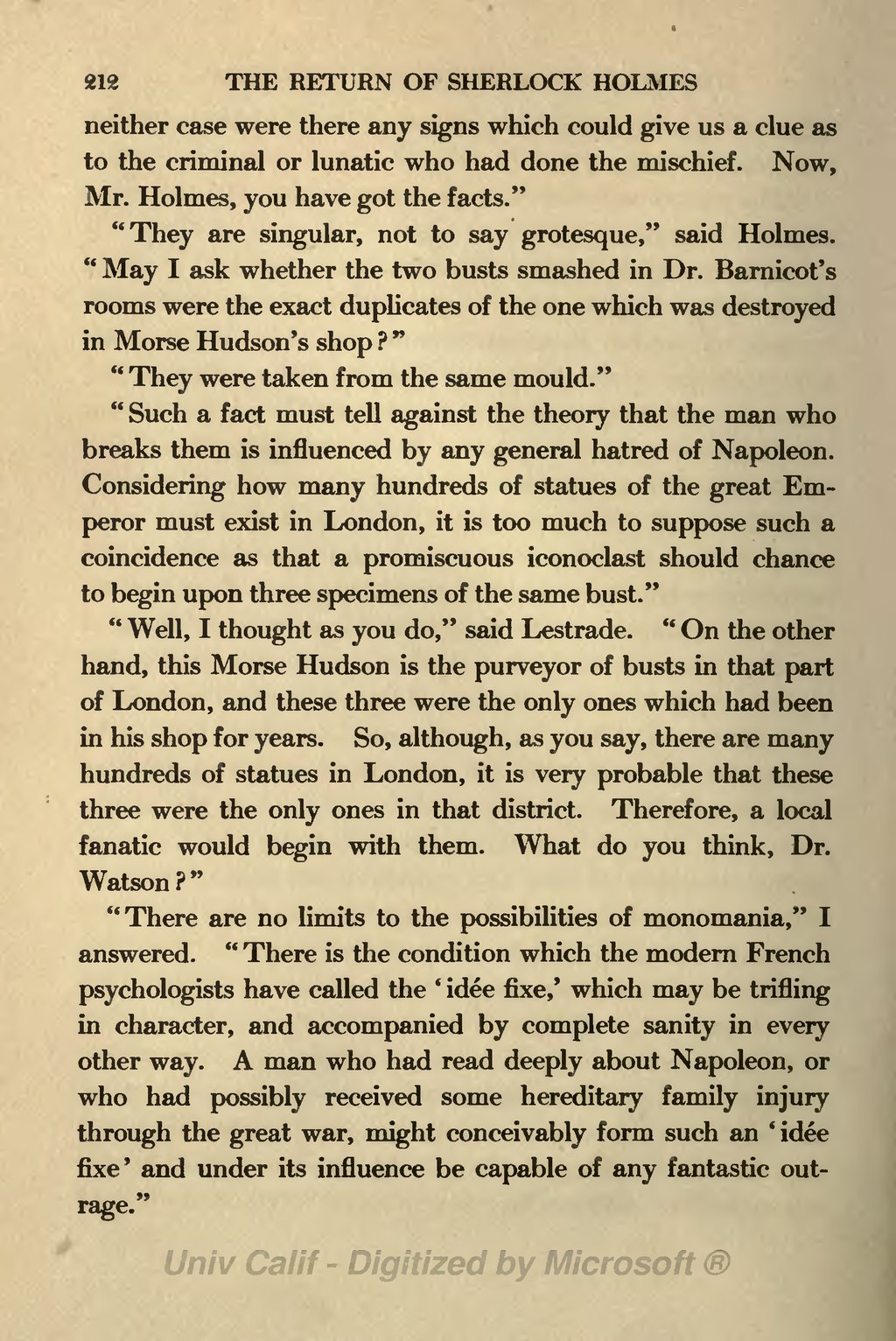neither case were there any signs which could give us a clue as to the criminal or lunatic who had done the mischief. Now, Mr. Holmes, you have got the facts.”
“They are singular, not to say grotesque,” said Holmes.
“May I ask whether the two busts smashed in Dr. Barnicot's rooms were the exact duplicates of the one which was destroyed in Morse Hudson's shop?”
“They were taken from the same mould.”
“Such a fact must tell against the theory that the man who breaks them is influenced by any general hatred of Napoleon. Considering how many hundreds of statues of the great Emperor must exist in London, it is too much to suppose such a coincidence as that a promiscuous iconoclast should chance to begin upon three specimens of the same bust.”
“Well, I thought as you do,” said Lestrade. “On the other hand, this Morse Hudson is the purveyor of busts in that part of London, and these three were the only ones which had been in his shop for years. So, although, as you say, there are many hundreds of statues in London, it is very probable that these three were the only ones in that district. Therefore, a local fanatic would begin with them. What do you think, Dr. Watson?”
“There are no limits to the possibilities of monomania,” I answered. “There is the condition which the modern French psychologists have called the ‘idée fixe,’ which may be trifling in character, and accompanied by complete sanity in every other way. A man who had read deeply about Napoleon, or who had possibly received some hereditary family injury through the great war, might conceivably form such an ‘idée fixe’ and under its influence be capable of any fantastic out- rage.”
